Last Modified: June 20th, 2024
3 min read

No NetSuite implementation effort would be effective and successful without the active and engaged participation of key stakeholders, mostly from the accounting and finance teams, and overall operations such as inventory management and order fulfillment. As such, one must factor in the cost of the time involvement of these resources throughout the different phases of the implementation project, from requirements gathering and validation, through testing, and actual historical data migration in preparation for go-live.
Businesses often consider the NetSuite Total Cost of Ownership when deciding to implement an Enterprise Resource Planning (ERP) System.
To put a US$ figure on “Internal Cost associated with Staff Involved” would totally be arbitrary as such is highly dependent on the scope, complexity, and size of the company. In short, you would know best how to approximate this figure. But to better guide you in ascertaining such cost, here’s what a typical team on the client-side (your side) looks like for a typical NetSuite implementation project.
Internal Staff Involved
A. Executive Sponsors
- Oversees the entire project
- Approves major decisions
The executive sponsors are the senior-most decision-makers on the project. They oversee the entire project and approve major decisions. They are from the client organization and have ultimate responsibility for the success of the project.
B. Project Sponsors
- Provide overall project direction
- Provide resources
- Resolve cross-functional issues
- Review project status, risks, and key issues
Project sponsors provide overall project direction, and resources, resolve cross-functional issues and review project status. They are vital to the success of any project and should be closely involved in order to ensure all aspects of the project are running smoothly. Without their involvement, projects can quickly fall apart.
C. Project Managers
- Create project plan
- Manage resources
- Communicate with stakeholders
- Monitor project progress
Client-side project managers, who work hand in hand with the vendor’s project manager, are responsible for creating the project plan, managing resources, communicating with stakeholders, and monitoring project progress. They play a vital role in ensuring that projects run smoothly, meet all objectives, stay on track, and are completed on time. Without a project manager, projects can quickly become disorganized and fail totally.
D. Business Analysts
- Gather requirements
- Create functional specifications
Client-side business analysts, who work hand in hand with the vendor’s business analysts, are responsible for gathering requirements and creating functional specifications. They work closely with stakeholders to understand their needs and then translate those needs into specific requirements that can be used by the development team to build the solution.
E. Developers
- Build the solution
- Test the solution
Client-side developers, if any, who work hand in hand with the vendor’s developers, are responsible for building the solution and testing it to ensure it meets all the requirements. They work closely with the business analysts to understand the requirements and then build the solution according to those specifications.
F. Quality Assurance/ Testers
- Test the solution
- Ensure quality
Client-side quality assurance/testers, who work hand in hand with the vendor’s quality assurance/testers, are responsible for testing the solution to ensure it meets all quality standards. They work closely with the developers to understand how the solution works and then test it against a set of predetermined criteria to ensure it is of high quality.
G. Deployment Team
- Deploy the solution
Client-side deployment team, who work hand in hand with the vendor’s deployment team, is responsible for deploying the solution to the production environment. They work closely with the development and testing teams to ensure the solution is ready for production and then deploy it according to the plan.
H. Operations/Support Team
- Provide support
- Ensure the solution is running smoothly
The operations or support team is responsible for providing support to users and ensuring the solution is running smoothly. They work closely with the deployment team to ensure the solution is deployed correctly and then provide support to users as needed.
I. Product Owner
- The primary point of contact
- Oversees scheduling and planning
- Coordinate with Excelym team
- Manage and prioritize system requirements
- Approve requirements and process flows
The product owner is the primary point of contact between the client and the development team. They oversee scheduling and planning, coordinate with Excelym team, manage and prioritize system requirements, and approve requirements and process flows.
J. NetSuite Key Departmental Champions
- Review requirements and process flows
- Provide feedback that shapes the solution
- Participate in planning & demos
- Provide training to respective departments and help champion change
These departments include accounting, purchasing, warehousing, and operations. They review requirements and process flows, provide feedback that shapes the solution, participate in planning & demos, and provide training to respective departments and help champion change.
Conclusion
In a straightforward NetSuite implementation engagement, the roles and responsibilities above are typical. For internal cost planning purposes, one can factor in approximately 6 to 10 hours per week (minimum) for 3 to 5 months for the resources identified above. The NetSuite Cost of Ownership is negligible when it comes to the benefits provided by the ERP system.
For more information about the NetSuite total cost of ownership:
Serge is a Managing Partner and the head of sales and business development.
Published on: June 17, 2022
